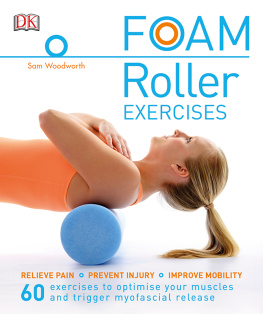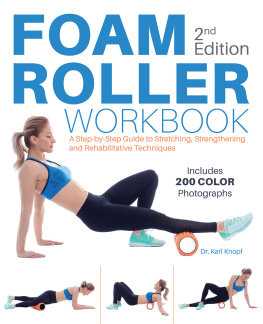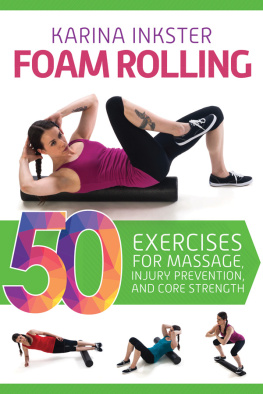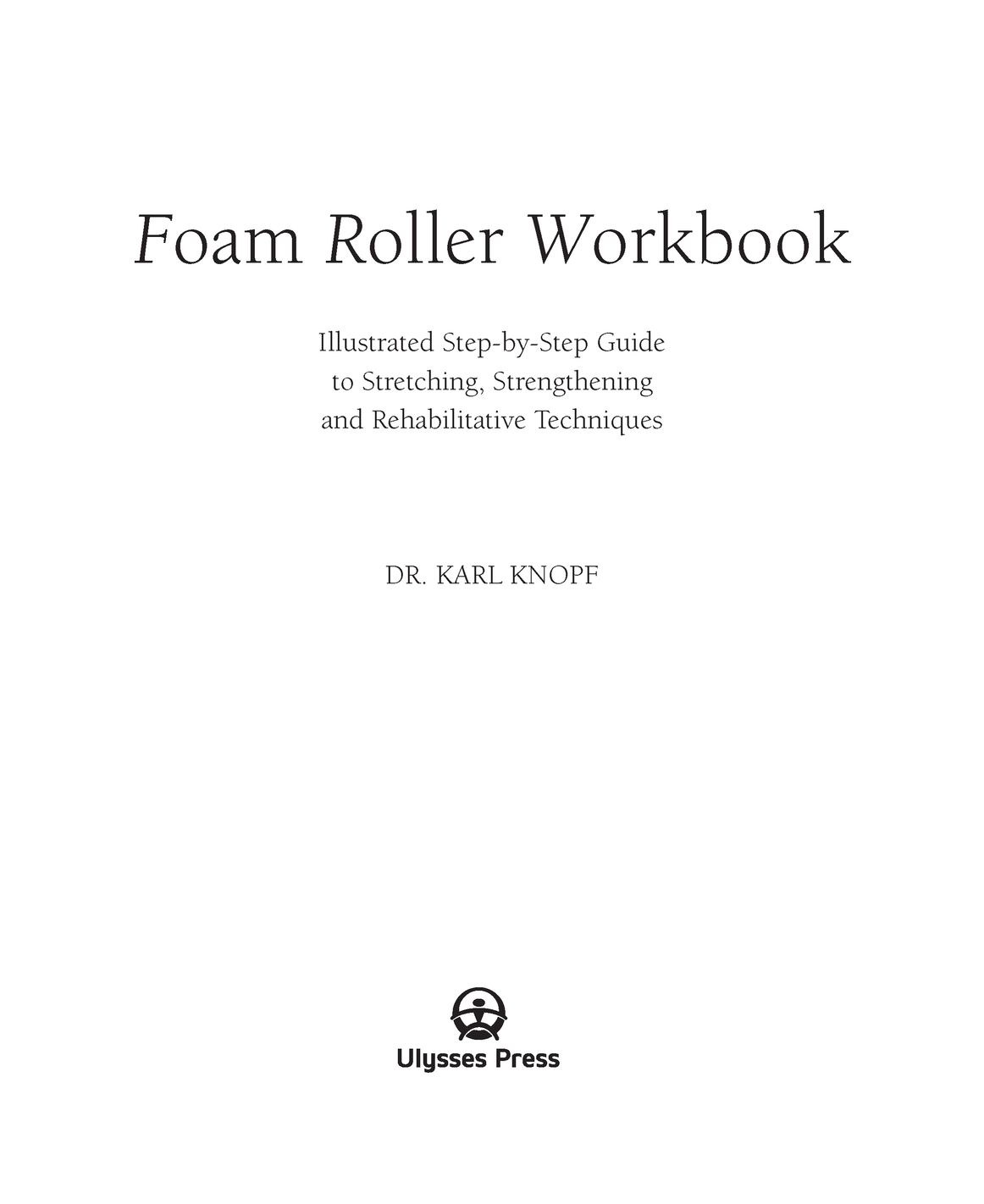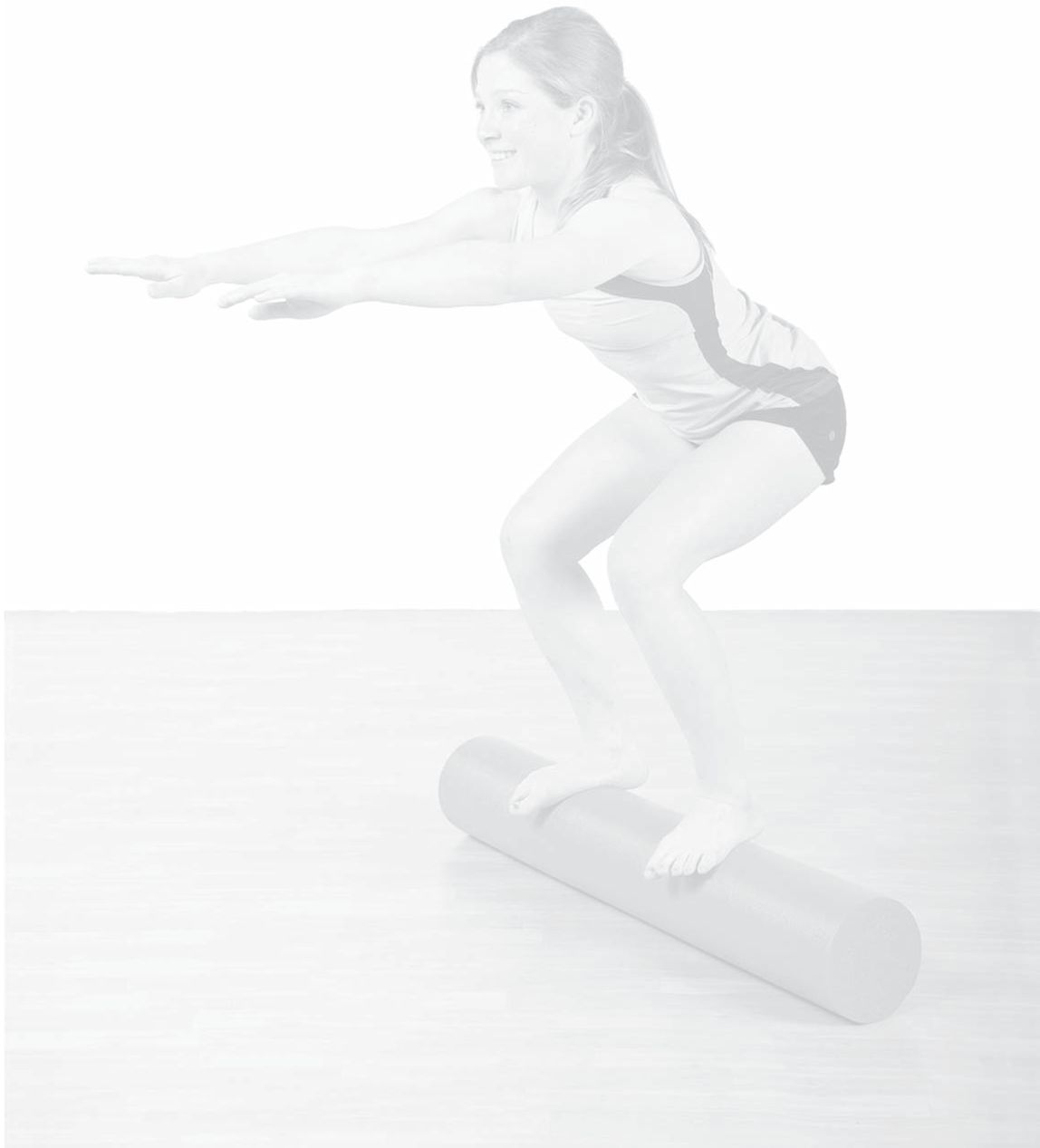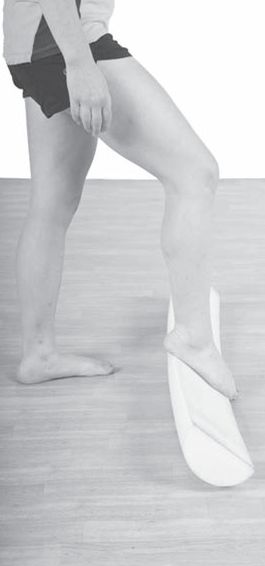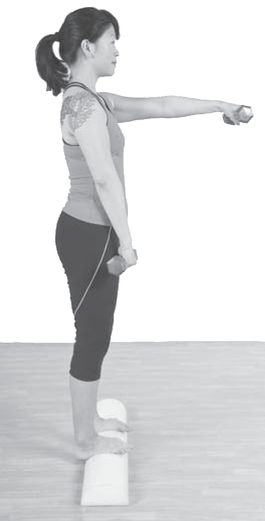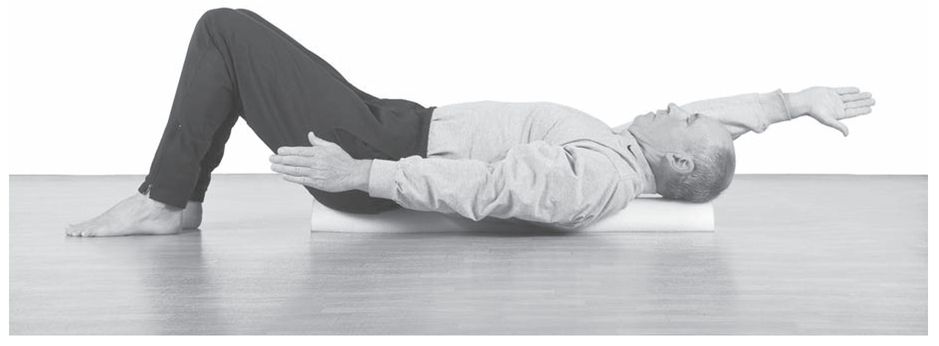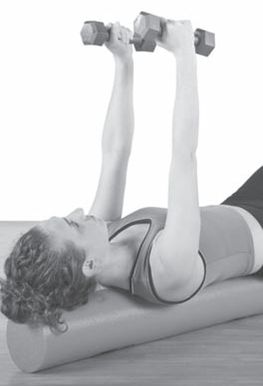Table of Contents
part 1
getting started
foam roller: the magic bullet?
Foam rollers were once used exclusively in physical therapy settings. In fact, Dr. Mosh Feldenkrais was credited with being the first person to use rollers for therapeutic purposes (e.g., improving body alignment, reducing muscle tightness, teaching body awareness) in the late 1950s.
Now theyre used in yoga and Pilates classes to strengthen the body as well as relax and stretch tight muscles. Theyre also available in most gyms stretching areas.
Some experts suggest that, if not addressed early, minor muscle imbalances (such as those tight, tender spots) can contribute to serious injuries or chronic dysfunction later on, which may require expensive therapy. Prevention is always easier and cheaper than treatment. Foam rollers are a wonderful way to address the above concerns while adding diversity and challenge to your standard exercise program.
Designing a balanced exercise routine that includes flexibility movements with strength training, cardiovascular exercise and relaxation can reduce chronic discomfort. Since foam rollers break up interwoven muscle fibers and help move oxygenated blood into those muscles, theyre an excellent vehicle with which to release those tight spots in muscles (the technical term is myofascial release) and return the muscles to a more optimal state. This can be done prior to exercising to improve range of motion, or after a workout to relax tight muscles and reduce soreness.
The beauty of the roller is that its inexpensive and easy to use, and can be utilized to rehabilitate your body as well as prevent possible issues such as lower back pain and shin splints. Foam Roller Workbook provides you with numerous exercises to improve posture, core stability and flexibility, as well as hone dynamic balance and mindful relaxation.
why use foam rollers?
The human body is designed in a remarkable manner and, if well maintained, will function efficiently for a very long time. Unfortunately, all too often we misuse or abuse our bodies, perhaps through activities of daily living or overuse. Whether youre highly active or sedentary, we all can benefit from a few minutes of light stretching and relaxation every day. A gentle, daily dose of movement keeps the joints lubricated and limbermotion is lotion.
More and more research in the field of exercise science shows that many of our chronic health issues can be positively influenced with corrective exercise. A former chief of orthopedics at Stanford Universitys School of Medicine once told me, Modern medicine can do remarkable things, but we are nowhere close to rebuilding the human machine as well as the original equipment we were born with.
Today, therapists use progressive stretching programs and teach proper body mechanics as part of their standard arsenal to help ease clients dysfunctions. Proper therapeutic exercise done regularly and performed prudently under the supervision of a trained therapist or personal trainer can be used to prevent injury, alleviate pain and restore your body to optimal levels.
You might already incorporate dumbbells, balance balls and resistance bands into your exercise program. Foam rollers are another tool that can provide an exciting and challenging dimension to your workout. One of the many great things about the foam roller is that it can be used by anyone, from severely disabled individuals to elite athletes. A simple adaptation can transform a basic exercise into an extreme challenge, thus allowing you to progressively ramp up the intensity of your routine and keep you from becoming bored.
A foam roller, used properly, is very effective for improving:
Range of motion
Core stability
Balance
Body awareness
Flexibility
Coordination
Focus
Body relaxation
The concept is that when you can perform an activity on a solid surface, you should progress to a less-stable platform in order to prompt your body to work harder. When youre on an unstable surface such as a foam roller, your body recruits more superficial and deep-lying muscles in order to maintain proper balance and body alignment. Some people often perform their normal exercise routine while standing or lying on a roller. By doing this, they not only isolate a particular muscle, they engage the whole kinetic chain, thus challenging all the major and deep-lying muscles.
Essentially, the exercises in this book, in concert with feedback from your health provider or massage therapist, can help you develop a better-balanced body. Theyll keep your muscles toned and supple, which fosters improved functional fitness. Theyll also demand that you practice proper posture and muscle alignment, which prevents joint dysfunctions and chronic pain. Joseph Pilates may have said it better: Stretch what is tight and strengthen what is lax.
Lightweight and inexpensive, foam rollers can be stored almost anywhere, like under the bed or in a closet. Another advantage of foam roller exercises is that they can be done in the privacy of your home and you dont even need to put on exercise clothes. All you need is enough space to lie down and spread your arms.
choosing a roller
Rollers come in a variety of shapes, sizes and densities and can be purchased online, at sporting goods stores and at physical therapy clinics. Selecting the type and length of roller youll need is a personal decision, dependent on your height and weight, experience level and overall needs.
The most common roller configurations are semicircular or circular, either three feet or one foot long. Semicircular rollers, sometimes referred to as half rollers, are flat on one side and curved on the other; theyre typically three inches in diameter. Circular, or round, rollers are generally six inches in diameter.
Circular rollers are more unstable (and thus more challenging) than their semicircular counterparts. Note that you can place half rollers either flat side down or up. Having the flat side down is more stable than placing the round side down. Dense, firm rollers are good for self-massage, but if youre especially stiff, you may want to start with a softer roller so that your muscles can more easily acclimate to the pressure.
All exercises in this book utilize rollers that are three feet long, but some can be performed on shorter rollers. We refer to full-length half rollers as FLHR and full-length circular rollers as FLCR.




